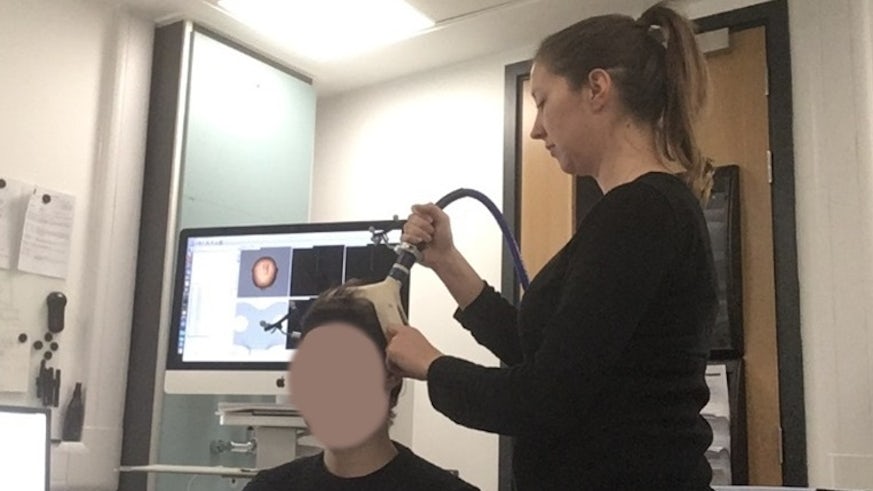How are lower-limb muscles represented in the brain?
5 May 2020

How are lower-limb muscles represented in the brain?
Dr Jennifer Davies, a post-doctoral research associate in the Centre, has published her recent work performed in the Brain Stimulation labs at the Cardiff University Brain Research Imaging Centre (also known as CUBRIC to understand how leg muscles are represented in the motor cortex. The full report can be read here.
In this work, Dr Davies used transcranial magnetic stimulation, a non-invasive technique in which a brief magnetic pulse is discharged from a hand-held device positioned over a particular location on the scalp. This magnetic pulse activates the brain cells located beneath it, and can cause them to send a signal. When this magnetic pulse is delivered over a part of the brain that controls muscles, a signal can be sent from the brain cells to the muscles, causing the muscles to twitch. The characteristics of the muscle twitch can be recorded, and can give us information about the pathway between the brain and the muscles.
This technique has been used by other groups to show that the way muscles are represented in the brain may be altered in clinical conditions such as focal hand dystonia, persistent elbow pain and low back pain. But what about in clinical conditions such as knee osteoarthritis? We don’t yet know, because much less work has been done using this technique to study leg muscles.
The first step to answering this question is to understand how leg muscles are represented in healthy individuals, without a clinical condition. In this work, Dr Davies asked how the muscles that control the knee joint are represented in a part of the brain that controls voluntary movements – the motor cortex. She found that the representation of these muscles was complex and variable across individuals.
This information will provide a basis against which to evaluate cortical organisation in individuals with clinical conditions that affected the knee.
This work also lays the foundation for future planned work to better understand how activity of the muscles of the knee joint is controlled during movements.